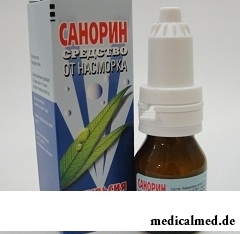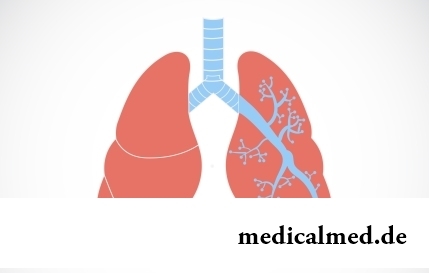





Tubo-otitis
Hearing is one of those functions which allows the person to obtain information on the world around. Also as well as sight, hearing – the most important mechanism of a research and knowledge of the world around. A human ear – body difficult, its physiology and a structure are directed to perception of sound waves in the range of 16 Hz-22 of kHz.
The mechanism of perception of a sound a human ear can be divided into two parts conditionally:
- mechanics – acoustical pass, an auricle, acoustical stones, tympanic membranes;
- the electrician – the acoustical center of a cerebral cortex, an acoustical nerve.
Through acoustical pass the sound gets on a tympanic membrane then repeatedly amplifies by means of acoustical stones, and in a snail of an internal sound from air fluctuation the sound turns into fluctuation of liquid and by means of special nervous cells will be transformed to an electric signal. That hearing functioned fully, harmonious work of all components of a human ear is necessary.
What is a tubo-otitis?
Tubo-otitis – a catarrh of a mucous membrane of an inner ear which develops as a result of dysfunction of an acoustical pipe.
Acoustical stones are in a pneumatic cavity (middle ear) in the thickness of a temporal bone, and for their full functioning pressure on average to fish soup has to be same, as well as in the environment. That it occurred, the pneumatic cavity has to be reported with the environment that occurs by means of vocational education - tuba auditiva (an acoustical pipe). The acoustical pipe opens in a nasopharynx and at adults its length makes 3,5 cm, and newborns have 2 cm. At emergence of dysfunction of an acoustical pipe there is a disease which is called a tubo-otitis (eustachitis).
Apply to definition of this disease also many other names: tubotimpanit, salpingootit, catarral average otitis (acute or chronic).
Tubo-otitis origins
It becomes preferential the tubo-otitis reason infectious process in the mouth of a pipe. The infection gets to a pipe from a nasal cavity. So, acute rhinitis can lead to hypostasis mucous a nose, including, and in mouths of acoustical pipes owing to what there is an impassability of an acoustical pipe. Impassability of a pipe, in turn, makes impossible alignment of pressure in a drum cavity that leads to disturbance of mobility of acoustical stones and it to a sign as an ear congestion.
Quite often at cold or a strong smorkaniye slime gets to the mouth of an acoustical pipe that is the reason of development of a tubo-otitis. Therefore at acute antritis and rhinitis it is important to blow nose correctly. At a smorkaniye it is necessary to open a mouth and to hold one half of a nose.
Sometimes, that permanent dysfunction of an acoustical pipe at vasculomotor rhinitis becomes the reason of a tubo-otitis. In that case it is possible to call a tubo-otitis a complication of vasculomotor rhinitis. Such tubo-otitis will hard respond to treatment, and formation of persistent hypostases in the field of the back end of the lower acoustical sinks with distribution on the mouth of an acoustical pipe is characteristic of it. Treatment of a tubo-otitis in this case needs to be combined with treatment of vasculomotor rhinitis.
At children the tubo-otitis quite often has bilateral character. At adult age the tubo-otitis is more often observed from the painful party.
Tubo-otitis symptoms
The main symptoms of a tubo-otitis are the hearing impairment, feeling of a congestion, periodic noise in an ear. The autophonia when the person hears an echo of own voice in a sore ear is sometimes observed. The same complaints are characteristic also of acute respiratory infections. The congestion in an ear can arise during differences of atmospheric pressure (for example, at flight in the airplane). At a tubo-otitis pain in an ear can be intensive or insignificant, and the general condition of the patient suffers a little.
When carrying out an otoskopiya at the patient such symptom of a tubo-otitis as a retraction of tympanic membrane is observed. Moderately acoustical activity decreases (by 20-30 dB). Also it is possible to carry complaints of patients to improvement of hearing after yawning to symptoms of a tubo-otitis or a proglatyvaniye of saliva. It results from temporary opening of a gleam of an acoustical pipe.
At children the tubo-otitis is followed by temperature increase to 38 and more degrees. There is a fever, feeling of a congestion of an ear, noise in an ear, deterioration in hearing. Pain at the same time can develop as at once, and through some time. At survey of an auricle at a tubo-otitis at children reddening and hypostasis of an auricle is noticeable. Quite often on the surface of outside acoustical pass bubbles appear.
Tubo-otitis complications
Often the tubo-otitis proceeds inertly and is followed by softly expressed symptoms therefore patients are not inclined to run at once to the doctor. Naturally, untimely identification and treatment of a tubo-otitis is capable to lead to various complications, namely: to persistent dysfunction of an acoustical pipe when in an ear cavity negative pressure is formed and exudate begins to accumulate. In turn, it becomes an origin of commissural process between acoustical stones, there is a persistent hearing disorder.
If the long time is present at a tympanic cavity negative pressure, there is an irritation of a snail therefore degenerative changes of an acoustical nerve appear, there is a neurosensory relative deafness. Besides, suppuration of exudate can occur at any time that pours out in acute purulent average otitis which, in turn, is also fraught with terrible complications.
Treatment of a tubo-otitis
First of all treatment of a tubo-otitis has to be directed to elimination of those factors which promote impassability of an acoustical pipe. For the purpose of reduction of hypostasis of a mucous membrane in an ear to the patient appoint vasoconstrictive drops in a nose: sanorin, Naphthyzinum, називин, тизин, etc. Also remove hypostasis antihistaminic medicines (gismanat, Suprastinum, кларитин, etc.).
For the purpose of the prevention of hit of infectious slime through an acoustical pipe from a nasopharynx in a drum cavity, the patient learn to blow nose correctly, can appoint also blowing off of acoustical pipes on Polittsera. Catheterization of an acoustical pipe which is done after an anemization of the pharyngeal mouth has quite good medical effect. Through a catheter enter couple of drops of solution of adrenaline of 0,1% or suspension of a hydrocortisone into an acoustical pipe.
At treatment of a tubo-otitis appoint also a number of physiotherapeutic actions: laser therapy on area of the mouth of an acoustical pipe, UVCh on a nose, Ural federal district, a pneumomassage of a tympanic membrane.
At adequate and timely treatment the acute tubo-otitis recovers for several days. Efficiency of treatment of a chronic tubo-otitis depends on timely elimination of pathologies of a nasopharynx, okolonosovy bosoms and a nasal cavity which cause continuous developing of a disease.
The person accepting antidepressants in most cases will have a depression again. If the person coped with depression by own efforts, he has every chance forever to forget about this state.

Use of medicinal plants in therapy is urgent today, more than ever. The drugs made of curative herbs cannot on...
Section: Articles about health
All like to sing. Small children with pleasure are engaged in a vocal, not especially thinking of hit in a melody. Adults most often hesitate, being afraid to show lack of talents in this area, and it is vain: singing is very useful for health....
Section: Articles about health
Helminthosis is one of the most widespread diseases. Statistically, any species of helminths infected every third inhabitant of the planet. Most of specialists even consider these data strongly underestimated: some uninvited "cohabitants" do not cause the carriers serious troubles, and patients just do not see doctors. The situation is aggravated also with the fact that people know about specifics of similar illnesses very little. At many presence of worms is strong ассоциир...
Section: Articles about health
Not everyone can brag of the shining Hollywood smile. Even at the person who is regularly visiting the stomatologist and watching з...
Section: Articles about health
For the help to doctors in the choice of optimal solutions for treatment of various diseases the Cochrane scientific organization (Cochrane) conducts joint researches with representatives of scientific community around the world. The analysis of a series became carried out by one of the last methanolyses...
Section: Articles about health
For the person who daily since morning gathers for work it is very important to wake up vigorous and ready by day of work. Actually, each of us experiences difficulties with this, at first sight, simple business from time to time. After night rest exert impact on a condition of an organism the weather which collected for several days fatigue, household and office problems, quality of a dream and many other factors....
Section: Articles about health
They say that to ensure health and longevity of people it is obliged. Really, at competent approach to these questions, we will pass...
Section: Articles about health
Tuberculosis – a serious infectious disease which development is caused by mycobacteria (Koch's bacilli). The illness is known from an extreme antiquity. Long time fight against it was considered as ineffective. Quite often the disease affected the whole families, and mortality from it was very much...
Section: Articles about health
Eyes – one of the most vulnerable areas on a face therefore age changes concern them first of all. Whether it is possible to keep look youth for many years and what procedures are offered for achievement of this purpose by cosmetologists? And maybe, the only option of rejuvenation is surgery – a blepharoplasty? Let's try to understand this question....
Section: Articles about health
For the last decades the diabetes mellitus of the second type became really world problem. Number of cases annually cart...
Section: Articles about health
Tea is loved and use almost everything. This drink has tonic properties, contains the tannins capable to suppress activity of causative organisms. Recently great popularity was gained by teas with vegetable additives. Лечеб...
Section: Articles about health
Osteoporosis this general disease which main sign is decrease in density of a bone tissue. On distribution width it takes the fourth place among noninfectious diseases. The illness develops at mature age more often: in our country about a third of women and a quarter of men suffers from it 50 years are more senior....
Section: Articles about health
Within several decades of our compatriots convinced that the use of butter nasty affects on...
Section: Articles about health
On the head of the person about one million hair follicles, or as they are called still, hair bulbs are located. At the time of the birth most of them is in the "sleeping" state, but within several weeks follicles become more active, and from them begin р...
Section: Articles about health
Each woman has preferences in the field of use of those goods which help us to look good, feel young and effective. Besides: selection process of favourite perfume, shampoo or decorative cosmetics already lightens the mood and serves as a peculiar stress medicine. Happens very offensively when the acquired perfumery and cosmetic products not only do not meet our expectations, but also becomes the reason of problems with health. Sources неприятн...
Section: Articles about health
Nightmares belong to the most unpleasant frustration. Statistically, they happen at 4% of adults, and almost at 70% of children and...
Section: Articles about health
What will only not be thought up by persons interested to have a beautiful figure. Here the last innovation – for weight loss needs to be eaten greasy food. Let's understand whether there is at a fatty diet common sense....
Section: Slideshow
Stroke (acute disorder of cerebral circulation) – one of the most widespread neurologic diseases. Annually in the world more than 6 million people die of this illness. From the survived patients about 80% become disabled people, and nearly a third from them needs afterwards permanent care. In fact, the stroke creates a situation at which a part of cells of a brain loses blood access, loses an opportunity to receive oxygen and nutrients, and perishes. As a result of a razviv...
Section: Articles about health
The state of health of the person depends on many factors. One of the most important is the constant but which is not exhausting, motive...
Section: Articles about health
About 20% of the population of our planet have a hypertension (permanent increase in arterial pressure). This disease has an adverse effect on the standard of living, reduces working capacity, and in the absence of systematic treatment threatens with such complications as a heart attack...
Section: Articles about health
From the failure of work of immune system which is shown in the form of an allergy, statistically, more than 40% of the population of the globe suffer. In most cases pathological reactions cause the substances which are contained in food stuffs, hair of animals, medicines, goods of household chemicals, cosmetics, pollen of plants, etc. On the one hand, the disease such is capable to spoil quite thoroughly to the person life....
Section: Articles about health
Life of the modern woman is very difficult. Opportunities to realize itself are wide: it not only education and career, but also most differently...
Section: Articles about health
Quite large number of people adheres to the principles of vegetarian food. But how to be if in a family of vegetarians there are children? Whether it is possible to eat also it the same as to parents, or after all the children's organism is not adapted for the use only раст...
Section: Articles about health
Herpes simplex of the first type (the infectious disease which is shown periodic bubble rashes on lips is called) – one of the most widespread illnesses. Statistically, only 5% of inhabitants of our planet are unreceptive to its activator, and the reasons of this feature are still not found out. Other people are virus carriers....
Section: Articles about health
Traveling all over the world, many try to try the most exotic dishes of national cuisines. Exists even so-called died away...
Section: Articles about health
Neurosis is called pathology of a nervous system at which deviations in functioning of the highest nervous processes are observed. Most often - owing to yet not strengthened mentality - children are subject to neurosises. Premises to emergence of such disturbances can become нез...
Section: Articles about health
Several decades ago the basil (the district khan, реан, Reagan) was considered as a part of the Caucasian or east cuisine, but today it strongly took the place on tables of Russians. Greens of this plant possess a strong, pleasant smell and specific fresh taste because of which it is included almost in all dry mixes of spicy herbs, and also give to meat and fresh fish dishes....
Section: Articles about health
